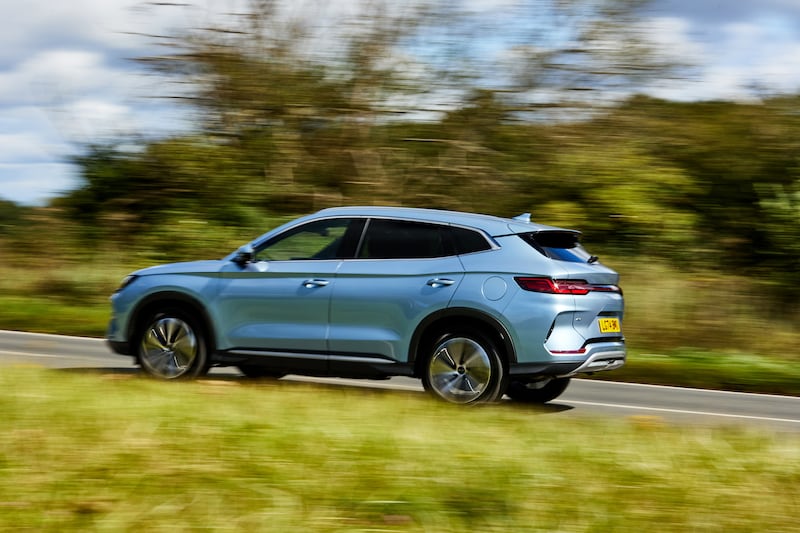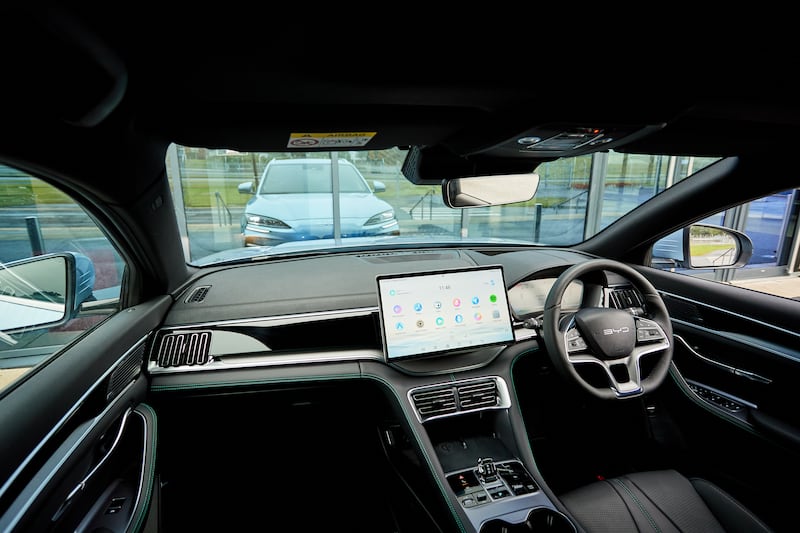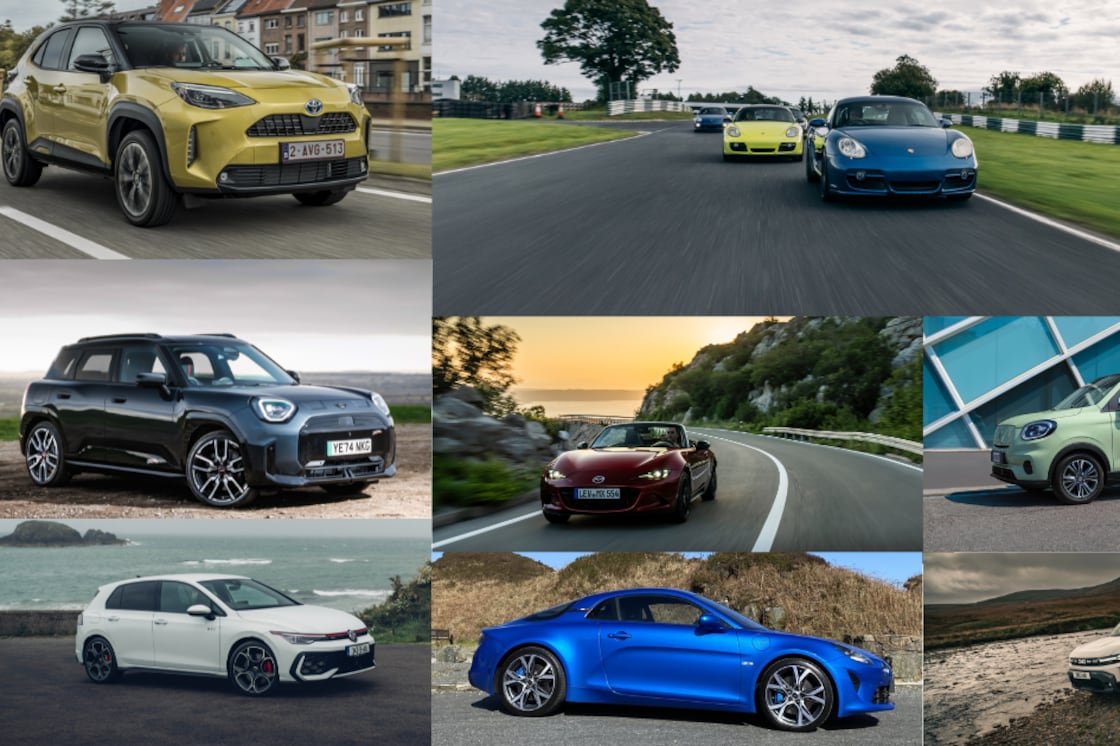You could almost sense the triumphalism from within the corridors of Brussels and Strasbourg as the EU announced its tariff-based clampdown on imports of Chinese-made electric cars. “Load them up with extra taxes, that’ll show ‘em” was the overall impression given as officials announced large new import duties on anything coming from east of India with a battery.
Well, almost anything. For a start, BYD – the most successful of the newly arrived Chinese brands in Ireland – didn’t flinch when it came to the new tariffs, which were originally levied at 17.4 per cent on BYD products, latterly reduced slightly to 17 per cent. So far, BYD hasn’t put up its prices, an action confirmed to The Irish Times as being thanks to an ability to draw from stock already landed in Europe. Beyond that, BYD and its local Irish importer, Motor Distributors Limited are not too worried about tariffs as the carmaker is due to open tariff-free factories in Hungary and Turkey in the next 18 months.
Equally, slipping neatly underneath the EU’s tariff radar is this, the Seal U DM-i Super Hybrid. Because it’s a hybrid (or even a Super Hybrid if you want to go by the blurb) it’s not affected by the tariffs, but in the hybrid-hungry Irish car market, it could yet prove to be even more popular than BYD’s popular all-electric models.
Why is it called a Super Hybrid? Well, it’s marketing puffery of course, but BYD tries to justify it by pointing out that the Seal U’s combined 1.5-litre petrol engine and electric motor, plus an 18kWh battery pack, offers more electric range than the competition – up to 80km on one charge for the entry-level Boost model – and can, when you fill both battery and fuel tank, run for more than 1,000km non-stop.
READ MORE
Of far greater import to Irish buyers will be the Seal U’s price tag – at €42,150 for the Boost version, it undercuts its closest competition from Hyundai and Kia, and offers more range on a single charge. It’s also a whopping €13,000 less expensive than the Toyota RAV4 plug-in hybrid, and while Toyota could counter that the RAV offer more power and four-wheel drive, BYD can counter the counter that there’s a higher-spec version of the Seal U with two electric motors, a turbocharged version of the 1.5 petrol engine, four-wheel drive, and a price that still undercuts that of the RAV4 plug-in.
There’s also a hugely impressive list of standard equipment for the Seal U. Both the front-wheel drive and four-wheel drive models have the same standard spec, so you get vegan leather upholster (it’s called vegan because apparently car product planners can’t spell vinyl), heated and cooled front seats, heated steering wheel, a 15in touchscreen which – slightly pointlessly – rotates from landscape to upright positions and back again, a panoramic glass sunroof, and DC fast charging for the hybrid battery (albeit at a relatively slow 18kW power). There’s also a lengthy standard safety equipment list, including adaptive cruise control and blind spot warning.
It might be badged as a Seal, and it shares the C-shaped headlights and smooth styling of the lower, sleeker all-electric Seal saloon, but the Seal U doesn’t look half so sharp as its four-door brother. It’s very much a chunky SUV trying to squeeze into slim-fitting gym clothes, but it’s not a bad looking car. It’s much better inside, where there’s palpably good cabin quality and excellent comfort for those sitting in the front. The only thing that really tells you you’re sitting in a Chinese, rather than European or Japanese, car is the slightly cheap-looking graphic design of the digital instrument panel.
The back seats are wonderfully spacious too, with ample legroom and headroom even for tall adults, and the rear seat back reclines to a comfy angle. True, those big front bucket seats eat into your view from the back, but the big side windows and that glass roof help to make up for that. The Seal U’s only real disappointment is a small boot – at just 425-litres, it’s well behind that of most competitors.


The Boost version mixes and matches its 1.5-litre petrol engine and its 145kW electric motor to produce a combined 217hp. BYD’s claim is that the Seal U’s DM-i (Dual Motor – intelligent) hybrid system is designed to prioritise electric power over petrol, and so the engine can either function conventionally – driving the front wheel via a direct clutch which links it to the electric motor’s single-speed reduction gear – or as a generator to top the battery up to keep you moving.
The 80km one-charge figure we can’t confirm as yet, as so far we’ve only driven the Seal U on a soaking wet day with zero charge in the main battery. However, it does prove tolerably economical on a long motorway run – traditionally an Achilles heel for a plug-in hybrid – returning between 6.0 and 7.0-litres per 100km, which is decent, if perhaps not exceptional.
It’s not what you’d call an engaging car to drive, however. The 1.5-litre petrol engine has a tendency to drone rather a lot at motorway speeds, although you do sort of start to subconsciously blot that out after a while – the standard high-end Infinity stereo helps in that regard. Other than that, the Seal U is a composed, refined, and comfortable way to cruise along a multi-lane road, and the softly-sprung suspension means that lumpy urban streets or badly maintained country roads are generally taken in its stride. Where the Seal U falls down is in its steering, which is so light and so disconnected from what the front wheels are doing that it sometimes feels as if you’re driving it from another car, by remote. There’s also limited grip and traction – at least in the dreadful weather conditions of our test drive – so any attempt to get the power down early on the way out of a corner is met a scrabble of traction control. Perhaps the four-wheel drive Design version would do better.
[ Europe’s Car of the Year: meet the seven finalistsOpens in new window ]
Does such unenthusiastic dynamic performance undermine the Seal U’s appeal? Possibly, and certainly its rivals from Toyota, Hyundai, Kia, Ford and beyond are all more rewarding to drive. But none of them are quite so rewarding in a financial sense, and that perhaps is something that players better with the majority of customers. So don’t buy a Seal U if you’re a committed driving enthusiast. But definitely do buy it if you’re committed to your bank balance.













